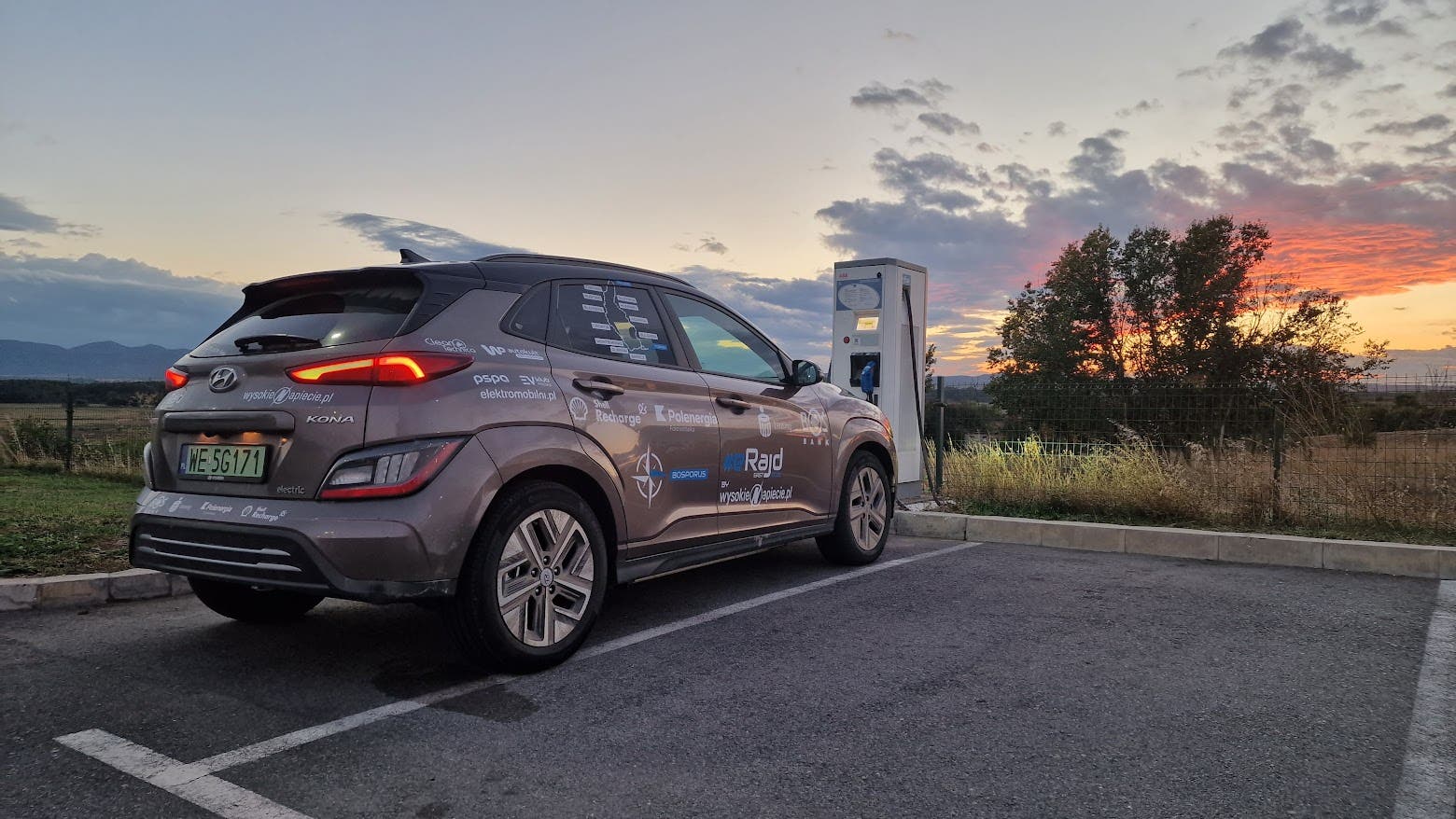The question I quite often hear is whether we need to do and report such EV trips at all. What’s the point at this moment of adoption when everybody knows you can travel any distance in your EV? You can do it in comfort now, after all, and travel cheaper than when pumping up bloody oil to put into a smelly gasmobile. Well, people don’t know that — I mean, not everybody. Other than the pure fun of completing an EV quest, the point is unchangingly to prove to non-believers (they still outnumber the believers) that you can travel any distance in your EV. You can do it in good time and plenty of comfort, and you will travel cheaper than when pumping up bloody oil to use in a gasmobile.
That’s exactly why the journalists of WysokieNapiecie.pl leave their loving partners, sacrifice exciting office time, and set off to challenge another corner of Europe — this time driving the Hyundai Kona Electric. As you could read in the two previous articles, they reached the Bosphorous Strait (which was voted the easternmost point of Europe). That was the final stage of an EV effort lasting 4 years. To summarize again, they went to Nordkapp (northernmost point in Europe), Cabo da Roca (westernmost point), Punta Marroqui (southernmost point), and now Bosphor. Time to have some fun, then, and show off a few more EV facts.
4 Seas in One Day
One thing is for sure — nobody can complain about the views on this trip. Setting off from the Black Sea, driving along the Marmara Sea and Aegean Sea, we reached the coast of the Ionian Sea after 945 km (587 miles). Although the drive was mostly on express roads and motorways, it took us a little over 11 hours. What was to blame was the slow way out of Istanbul, countless speed limits along Turkish roads, a long wait at the border, and … 3 charging sessions (instead of possibly 2, but the team gave in to the fear of unavailable Greek stations). The Shell Recharge card had spoilt the WysokieNapiecie.pl drivers and the vision of using the Greek network of ElpeFuture, not offered as part of roaming and possibly not fully operational in the relaxed spirit of hot Southern Europe, scared them a little. All in all, they decided to make three charging stops just be on the safe side.
Excellent views, plus the Kona Electric. (Photo courtesy of WysokieNapiecie.pl)
The first stop was taken while still in Turkey after three hours of driving, to do some small shopping. It took 25 minutes at a 120 kW ZES fast charger. After another 3 hours of driving, they made a longer stop to have dinner in Greece, which took 55 minutes — so even a slower charge of 50 kW was fine and sufficient. A little concerned about the potential charging situation in Greece, the team chose to make the third charging stop after 2 hours of driving to suck in all of the available kWh, which meant 55 minutes more charging time. That was also, noteworthy as it is, the only time the team had to wait for the car to be charged — unlike in two other instances where the car waited ready for them to finish their errands. Compared to an ICE car, the extra time added was 30–40 minutes, as the rest was part of normal journey behavior regardless of what you are driving.

Charging at every opportunity when DC chargers are scarce. (Photo courtesy of WysokieNapiecie.pl)
As far as costs, the Balkans are quite pricy. The cost of fast charging in Turkey (€0.53/kWh) and Greece (€0.65/kWh) may be considered high. On the other hand, the Greek hotel only charged a symbolic €1 to charge the Kona up, meaning the average price of energy along the four seas was €0.41/kWh. Doing the usual cost per 100 km calculation, it seems quite high at €7.60, but the same money would only buy you 4 liters of fuel (petrol at €1.95/l, and diesel at €1.87/l). Fuel is definitely more pricy than what Europe was used to before Russia started the war in the east, and now both fuel and energy prices keep growing.
Stay tuned for the 4th article documenting this journey, publishing shortly no doubt. And let us know if you have any questions about charging in these countries or taking a Hyundai Kona EV on a road trip!
Appreciate CleanTechnica’s originality and cleantech news coverage? Consider becoming a CleanTechnica Member, Supporter, Technician, or Ambassador — or a patron on Patreon.
Don’t want to miss a cleantech story? Sign up for daily news updates from CleanTechnica on email. Or follow us on Google News!
Have a tip for CleanTechnica, want to advertise, or want to suggest a guest for our CleanTech Talk podcast? Contact us here.
Read the full article here



